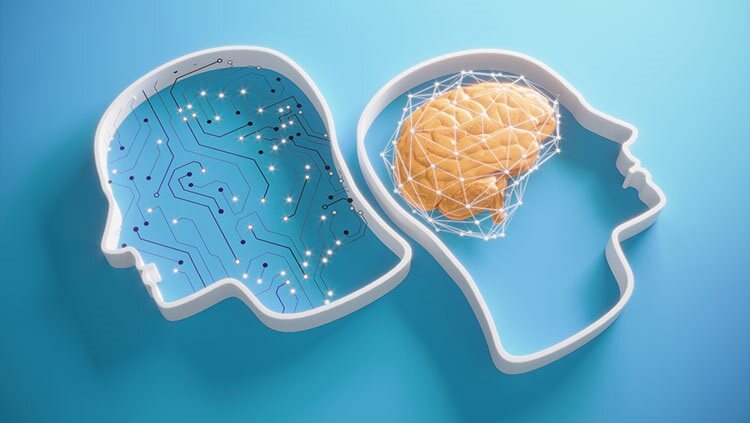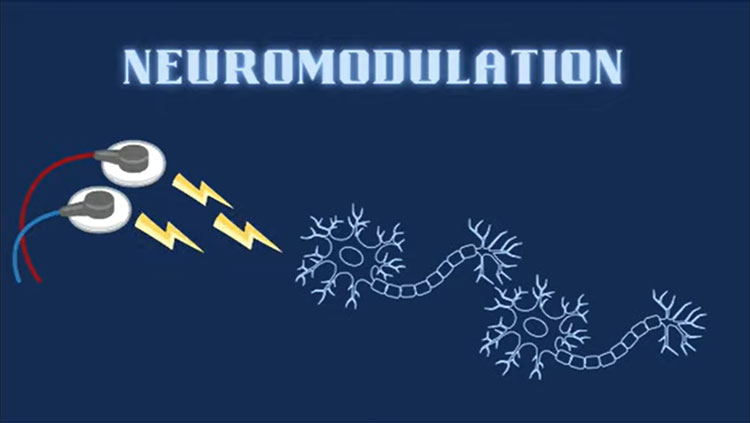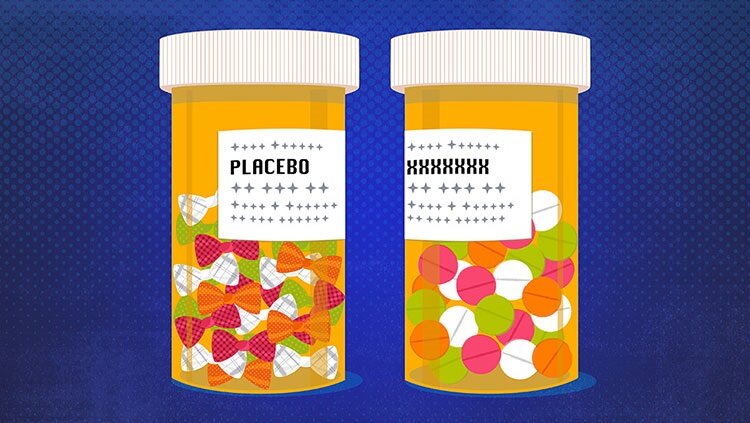AI Informs Diagnostics and Therapies for Depression, Alzheimer’s, and Dystonia
- Published12 Dec 2023
- Author Nick Keppler
- Source BrainFacts/SfN

AI is Collins Dictionary’s 2023 Word of the Year, marking months of zeitgeist-riding, panicked news stories recounting ways artificial intelligence could eliminate jobs, disrupt societies, or kill us all. But for neuroscience researchers, AI is a breakthrough that could help diagnose brain disorders and improve treatment.
In pre-publication research presented at the annual meeting of the Society for Neuroscience, AI systems examined data with speed and precision that would be difficult or impossible for humans. This helped researchers pinpoint brain patterns which could unlock new understandings of depression, Alzheimer’s, and dystonia.
More Data for Deciphering Depression
Machine learning systems have actually existed for decades, said Terry Sejnowski, director of the Computational Neurobiology Laboratory at the University of California San Diego, and moderator of a panel on AI research. “Going back to the 20th century, artificial intelligence was born when the computer became available,” he said, “and the idea was that if we could program the computer to be able to mimic human intelligence that this would solve a lot of difficult problems.”
However, there was a data problem. To contribute to scientific insights in ways exceeding human intelligence, the systems needed to analyze immense amounts of data. This was only possible in the last 20 years, with the advent of the internet and massive repositories of human health data. The pooling of datasets was critical to all research presented.
Ayumu Yamashita, a researcher at Japan’s Advanced Telecommunications Research Institute International, led a team in gathering magnetic resonance imaging scans of brain activity from 1,162 patients, including scans from 334 people diagnosed with depression. Several deep learning algorithms analyzed these sets.
They found 83 kinds of abnormal connections seemingly correlated with depression. The biomarkers showed up in brain regions related to the motor network and the thalamus, which plays a role in the regulation of emotion. Interestingly, electrostimulation of the thalamus has led to improvement in depression symptoms.
Earlier Alzheimer's Detection
Another researcher shared results from an attempt to predict progression of Alzheimer’s disease using deep learning. Nikita Goel, a master’s student in computer science at the University of Southern California, and colleagues gathered another massive data trove: MRI scans, plus genetic and demographic information, from 2,448 people in a patient volunteer database from the Alzheimer's Disease Neuroimaging Initiative. They also subjected their dataset to several rounds of processing by deep learning algorithms.
“What do we get out of all this?” asked Goel. “We've got some structured guidance that helps us to understand whether the disease is progressing or not.”
Manifestation of Alzheimer’s starts with signs of mild cognitive impairment, which can be difficult to differentiate from normal aging. They found a few data markers that could predict a transition from mild cognitive impairment to Alzheimer’s.
Even though emerging drugs can slow the progression of the disease, they only work during the early stage of Alzheimer’s, making early detection crucial. A head’s up from these AI approaches could not only identify patients who are at the earliest stages of Alzheimer’s when available therapies are most helpful, they may also spur patients to participate in clinical trials for new drugs, said Goel.
Enhanced Surgical Precision for Dystonia Treatments
Maral Kasiri, a researcher at the University of California, Irvine, presented the work of a team who looked for an AI assist for the treatment of dystonia, a neurological disorder characterized by involuntary muscle contractions. It causes people to contort into painful postures.
One treatment is deep brain stimulation, a procedure in which surgeons drill small holes in the skull and implant electrodes to stimulate brain tissues. It's effective in the treatment of dystonia, as well as Parkinson’s and epilepsy. Although the treatment mechanisms aren’t fully understood, it seems to jumpstart the brain’s regulatory systems, helping get control over the disease.
It's an invasive process. After the holes are drilled, the patient stays in the hospital for five to seven days while doctors use temporary electrodes to test areas of the brain with electric stimulation. After finding the best spots, they perform a second surgery to implant permanent electrodes.
Kasiri and her team obtained brain scans from children undergoing this process. An AI system used the data to reliably predict the brain areas most responsive to deep brain stimulation. This could cut days off hospital stays and improve the outcomes, Kasiri said. “The ultimate goal is to reduce the time of the surgery and also reduce the number of surgeries from two to one,” she said.
Sejnowski, the panel’s moderator, said that AI can outline the patterns and movements in the brain, but it cannot determine what they are working towards, how these micro-details fit into functions like memory, thought, and perception. The larger whys still require human interpretation.
“It's like it says if suddenly, somebody gave you the activity pattern of every neuron in the brain, right? Now, it's our challenge to be able to interpret that activity.”
CONTENT PROVIDED BY
BrainFacts/SfN
Also In Therapies
Trending
Popular articles on BrainFacts.org


















